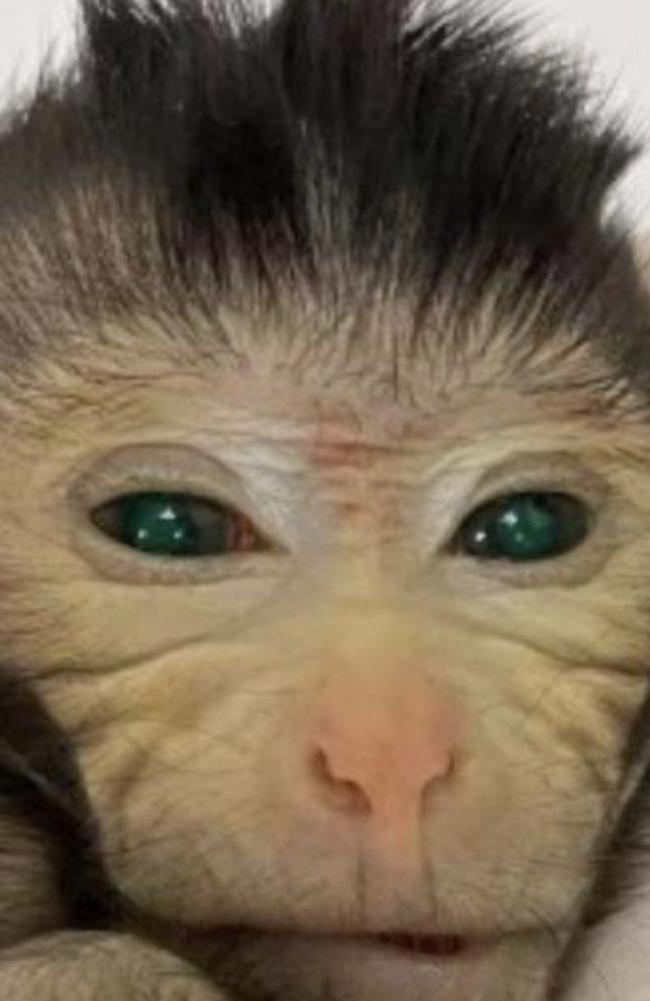Stunning monkey born with glowing eyes and fingers
Scientists in China have announced the birth of a chimeric monkey – with stem cells taken from two embryos.
Scientists in China have announced the birth of a chimeric monkey – with stem cells taken from two embryos.
While the primate only lived 10 days it is being hailed as a major scientific breakthrough, with the findings published in the scientific journalCell.
The male monkey was created using stem cells of two genetically distinct fertilised eggs from the same species to create one living and breathing macaque.

To highlight the breakthrough, injected cells from a separate embryo were tagged with green protein so scientists could see which tissues grew from stem cells – hence the shining eyes and fingertips.
The resulting animal has a high proportion of green-tinged tissue produced by the stem cells, including in its eyes, fingers, tail and up to 90 per cent of its brain.

Experts hope the breakthrough could one day create monkeys with humanlike tissues which would allow biomedical researchers to screen drugs more precisely and test new therapies for afflictions such as amyotrophic lateral sclerosis.
Researchers admit the overall efficiency of this process “remains low” (about half as successful as creating an embryo without chimerism from in vitro fertilisation), but they claim it’s a promising step.
Senior author Zhen Liu, of the Chinese Academy of Sciences, said: “This is a long-sought goal in the field.”
He added: “This work could help us to generate more precise monkey models for studying neurological diseases as well as for other biomedicine studies.”
Sydney University lecturer in health law Dr Christopher Rudge told new.com.au the medical experiment had been on the cards for a long time.
“This is another step along the journey,” he said.
“The advancement here is that scientists have never been able to show such a prolific survival / proliferation of donated (or ‘complemented’) embryonic cells through a single organism.
“You’ve got more of these donated or secondary cells throughout the organism in a mammal.”
But he cautioned whether it would lead to anything substantive.
“Regenerative medicine has been hyped since the late 1990s,” he said. “Unfortunately it has not borne fruit.”
For the study, the researchers used stem cell lines – a group of cells grown in a lab from a single stem cell – and taken from a seven-day-old embryo.
These cells were then injected into embryos that were four to five days old.
The embryos were implanted into female macaques, resulting in 12 pregnancies and six live births.
Of the six, one baby monkey was born alive and managed to survive for 10 days.
Analysis showed this male newborn had donor stem cells in 26 different types of tissue, ranging from 21 per cent to up to 92 per cent.
carla.mascarenhas@news.com.au
More Coverage
Originally published as Stunning monkey born with glowing eyes and fingers





